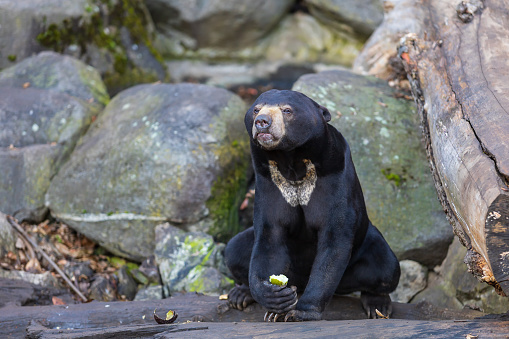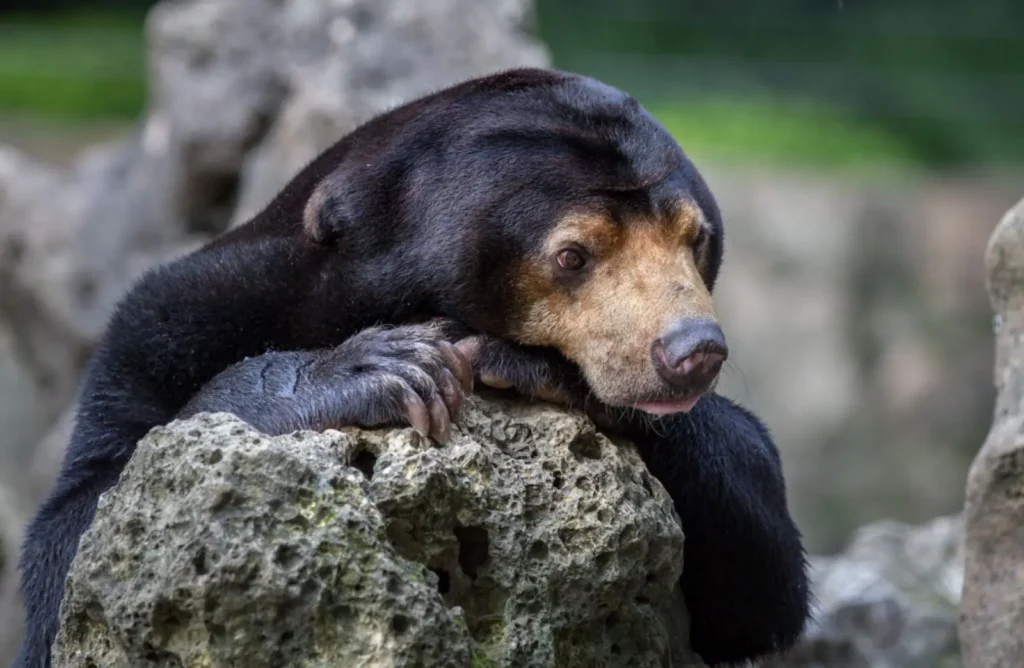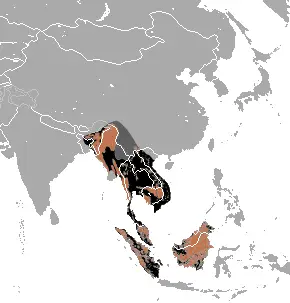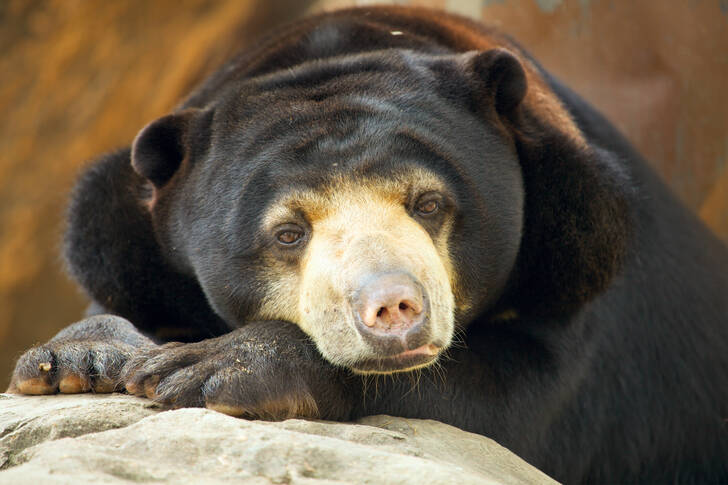Malay bear (Helarctos malayanus), also known as the sun bear, is the smallest member of the bear family (Ursidae). Its peculiarity is a bright yellowish-orange spot on the chest, resembling the sun, hence the second name – "sunny bear ”.
This view leads to mostly nocturnal lifestyleIt is an excellent tree climber and is one of the most thermophilic bears, as it lives in the rainforests of Southeast Asia. Thanks to its compact body, strong paws and long claws, it is adapted to the forest lifestyle.

Classification
🔬 Scientific classification:
✔ The Kingdom: Animals (Animalia)
✔ Type: Chordal (Chordata)
✔ Class: Mammals (Mammalia)
✔ Row: Predatory animals (Carnivora)
✔ Family: Bearish (Ursidae)
✔ Gender: Helarctos
✔ View: Malay bear (Helarctos malayanus)
🔍 Subspecies:
• Helarctos malayanus malayanus - lives on the mainland of Southeast Asia
• Helarctos malayanus euryspilus - endemic to Borneo
Appearance
📏 Adult sizes:
• Body length: 100-140 cm
• Shoulder height: 50-70 cm
• Weight: 25-65 kg (males are much larger than females)
🎨 Features of appearance:
* Short shiny black coat
* Large light yellow or orange spot on the chest
* Relatively short muzzle profile, which gives the face a "good-natured" look
* Long, narrow tongue (up to 25 cm), adapted for extracting honey and insect larvae
* Huge curved claws that help you climb trees
📌 Interesting!
Bear Malay has the shortest coat among all the bears. This is because it lives in hot and humid climates.
Lifestyle and behavior
🐾 Main Features:
• Solo lifestyle
• Nighttime active period, although it may also be active during the day in some territories
• Gorgeous tree climber - spends a lot of time in the trees
• Does not go into hibernation due to the constantly warm climate
📌 Interesting!
These bears are sleeping in the hollows of trees at a height of 2-7 m above the ground to avoid predators.

Living environment
🌍 Habitat range:
* Southeast Asian rainforests
* Main countries of residence: Malaysia, Indonesia, Thailand, Myanmar, Vietnam, Laos, Cambodia, Brunei, India
* Main islands: Borneo, Sumatra, Java
🏞 Typical habitats:
* Wet areas tropical forests
* Mountain and lowland jungles
* Bamboo thickets

Food
🥗 Basic diet:
• Fruits, nuts, berries, honey (most of the diet)
* Insects (termites, bees, larvae)
* Small vertebrates (lizards, rodents)
* Bird eggs
🔍 Foraging method:
• Climbs trees in search of fruit
• Uses a long language for sucking honey out of hives
* Destroys termite mounds and anthills with its long claws
📌 Interesting!
Due to the great love of honey, the Malay bear has received another name – "honey bear ”.
Reproduction
👶 Breeding season:
* Does not have a clearly defined mating season
* Pregnancy continues 95-120 days
🐻 Newborns:
* Born 1-2 cubs
* Bear cubs weigh 300-400 g
* The female takes care of them until 2 years old
📌 Interesting!
Puppies are born blind, without hair and are completely dependent on their mother.

Human interaction
⚠ Threats to the species:
* Deforestation reduces natural habitat
* Hunt for bile, claws, meat, and skin
* Bears are caught for illegal trade
🏛 View protection:
* Included in the IUCN Red List how vulnerable species
* Protected in national parks in Indonesia, Malaysia and other countries
📌 Interesting!
In some countries, the Malay bear is kept as petalthough this is illegal.
Interesting facts
📌 Facts about the Malay bear:
1️⃣ The smallest bear in the world - 2-3 times smaller than a brown bear
2️⃣ Humanoid features - sometimes it seems that Malay bears can " smile”
3️⃣ Longest tongue among bears – to 25 cm!
4️⃣ Best tree climber among bears
5️⃣ It has a very powerful jaw, which makes it easy to crack coconuts and tree bark
Conclusion
Malay bear (Helarctos malayanus)- a unique representative of the bear family, living in the rainforests of Southeast Asia. Its small size, excellent climbing skills and feeding habits make it one of the most interesting bears in the world.
Despite its strength and adaptability, this species it is threatened with extinction because of deforestation and poaching. The protection of these animals is an important task of environmental organizations.